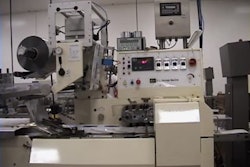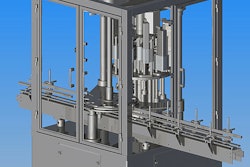Nanotechnology is generating plenty of buzz among the media, academia, the investment community, and many sectors of industry. But what impact will nanotechnology have on packaging?
This editor looked for answers in the softbound book Nanotechnology in Packaging, by Dr. Graham Moore, head of strategic consultancy with Pira Intl. Ltd., the book’s Surrey, England-based publisher.
After an executive summary that briefly discusses packaging, the book follows a logical five-chapter approach that steers readers through the evolution of nanotechnology, commercial applications, “pathways to realization,” commercial ventures, and future developments. While the applications section explores ways to use nanotechnology, the commercial ventures part profiles companies that operate in the nanotechnology sector.
As the book explains, the primary thrust of nanoscience and nanotechnology is in the areas of materials science, electronics and optoelectronics, and biomedical science. Although it may be helpful to learn about “nano”-development in these different industries, too much of the book focuses on applications outside packaging, making its title a bit misleading.
That said, the book is good at providing a base of knowledge, beginning with the first sentence of the executive summary: “Nanotechnology has been used freely in the context of describing the manipulation of atoms and molecules to create structures that have applications in the real world.”
When it comes to packaging applications, the second chapter, commercial applications, explains that the application of nanoscience and technology is helping to deliver materials with greater functionality and more durability to increase shelf life. Further advances include
• increased fracture hardness by alumina composites,
• good tensile strength through carbon nano-fiber and carbon nanotube composites,
• improved barrier, flame resistance, thermal and structural properties of many plastics with nanoclay composites, and
• improvements in oxygen-barrier properties by the use of nanoparticles in polypropylene.
The book says that “it has been reported by U.S. analyst B.R.G. Townsend and Packaging Strategies that within the next five years, five million pounds of nanocomposite materials will go into both rigid and flexible packaging.” That number is forecasted to reach almost 100 million lb by 2011, with carbonated soft drinks, beer, meats, and packaged foods and condiments leading the way in material use.
Gas-barrier characteristics have created considerable interest in nanoclay composites in food packaging applications, both flexible and rigid, according to Moore. Oxygen barriers, nanoclay incorporation in packaging films, and tag-and-trace applications for brand security and supply-chain tracking applications are also touted as benefits in packaging.
This second chapter on commercial applications includes several packaging-related applications, though it’s not clear if these applications involve commercial packages. Black-and-white charts interspersed in the copy provide data about “enhanced thermal stability of thermoplastic resin (HDPE) with nanoclay addition,” “water vapor transmission rate of thermoplastic resin (HDPE),” and “tensile properties of PP nanocomposites.” A chart identifies suppliers and trade names in one column; the matrix resin in another; the “nano filler,” such as organo clay or nano tubes, in another column; and the target market in another. The last column includes barrier films, packaging, multipurpose bottles and film, as well as several nonpackaging markets. For packaging professionals, this second chapter most merits the 86-page book’s $530 cost.
The fourth chapter examines commercial ventures in the field of nanotechnology. In the final chapter on future developments, Moore editorializes, “The high cost of experimenting with an unfamiliar technology covering a wide range of disciplines makes it hard for many companies, and in particular for paper, packaging, and printing, to establish what nanotechnology can do for them. Nanotechnology will affect, directly or indirectly, so many sectors that failure to respond to the challenge will threaten the future competitiveness of many organizations and companies.”
The book helps readers understand the topic and makes them want to know more. Yet the graphic appeal falls far short of the subject matter. Some color charts or images would have helped, though that may have made the book cost-prohibitive. The only color appears on the cover in the form of a molecular image in a small rectangle centered against a duotone that shows manual manufacturing scenes from a century ago.
The application of nanotechnology shows considerable promise in improving packaging materials’ properties, but the majority of those advances are years away and will require continued investments to fund research and development.
See the sidebar that goes with this story: Nanotechnology in packaging






















